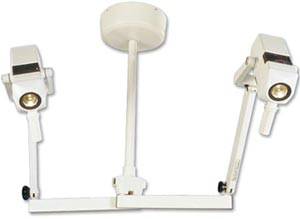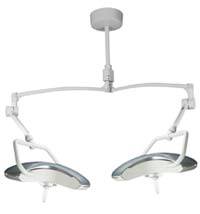Home » Hospital & Durable Medical Equipment » The Best Options In Operating Room Lights » The Best Options In Operating Room Lights
The Best Options In Operating Room Lights

Dual Minor Surgical Lights
Retail Price: $6,466.86
Your Price: $4,790.27

Energy Saver Double Ceiling Mount Light
Retail Price: $7,356.77
Your Price: $5,449.46

Isis Double Ceiling Mount Minor Surgery Light
Retail Price: $5,607.18
Your Price: $5,241.04
 Unit: single
Unit: single
Upgrading an existing operating suite or building a new theatre all starts with selecting the right lighting. While lights in a hospital in general are an important consideration, having the right illumination that is true color and shadow free is essential in the operating room.
Operating room lights are designed with this in mind but there are still choices that are available between the various models and styles. One important consideration is the amount of light that will be required and how large the lighted area will need to be. For example, in a cosmetic surgeon may need more focused surgical lights that provide a narrow beam of light to target a small area of the face or body. In contrast a surgeon performing a major surgical procedure is more likely to need a wider beam of light that covers a greater surface area of the body. Depending on the size of the light area required either a slammer focused single lamp surgical light or a large double mount ceiling option may be the best choice for operating room lights.
Operating room lights have changed dramatically with advances in lamps as well as energy efficiency goals of many medical facilities. LED and halogen lights are both energy saving as well as longer lasting than many traditional types of surgical lamps. Choosing surgical lights with a greater or lesser number of individual lamps may also be important in budgeting. Typically more lamps will require more replacements and will also be more costly to operate. Depending on the type and amount of light needed having the additional lamps for shadow free positioning can be a key factor. More lamps on a light are common with the single and double mount ceiling options. These lights are designed to be positions downwards, either straight or on an angle, to illuminate the desired area without shadows or variations in light intensity.
The more positioning options available for operating room lights the more practical the light is for multiple types of procedures. Most lights are positioned using an autoclaving handle or a handle that can be sterilized between contact. The positioning handle may also have all the controls for the light. These can provide controls for on and off, dimming and choosing the lamps that are used on the specific light. Other models may feature wall switches that can be used to turn the light on and off or have the controls located close to the base of the arms.
Once the light is positioned it is critical to consider models that offer a no-drift feature that keeps the light virtually in the same spot until it is physically moved. Some models of lights have a counterweight system that ensures the light will stay in place. This is an important feature since having the light source in the correct position throughout the entire procedure saves time and prevents possible complications.
The use of reflectors, especially multi-faceted reflectors found in major surgery operating room lights, provides additional focus of light across a multi-level surface. They are also considered essential in eliminating shadows that can be created with light systems that do not use reflectors. Reflectors can be found in the single, double and trio mount lights using a variety of different types of lamps. Surgical lights must be approved for use in the specific facility and with the types of gases and anesthetics that could be used in the operating room. Some lights, often including those with halogen or metal halide bulbs, do not have approval for use in operating theatres using flammable oxygen and anesthetics. It is essential to check all certification and approvals of the light to ensure it is in compliance with the intended use.














